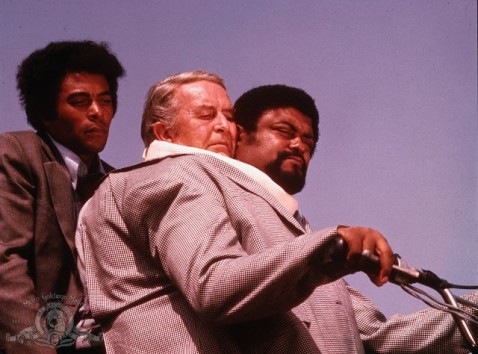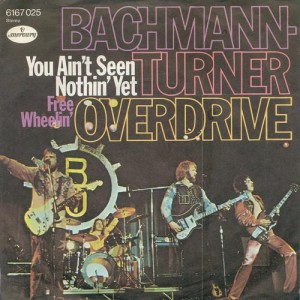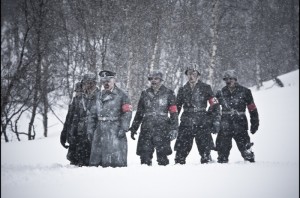
Learn From the Worst! How to Turn “Bad” Art Into Good Writing
If you go to school for writing, you will read some of the very best stuff there is. My first semester, I read Anna Karenina, Crime & Punishment, David Copperfield, The Good Soldier, and 16 or 17 other great books. Now, when I teach three workshops a week, we start each class by looking at work by George Saunders, Lorrie Moore, Graham Greene, Edward P. Jones, and many, many others. Reading your betters is an essential part of learning to write. But this can sometimes be daunting. I read Colum McCann’s short story “Everything In This Country Must,” and think: Damn, why bother? It also can make it hard to see the possibilities, which is one of the most important tools for writing.
At times like these, it’s good to turn away from your betters and toward the cutout bin, the bottom of the Netflix category, the paperback bestseller list. In other words: Your worsts.
Let’s skip past the issue of what makes something “bad” in an objective sense. Let’s focus, instead, on what you find bad. You hate the prose stylings of Mr. James Patterson. You think Twilight is the worst thing you’ve ever read. Maybe you can’t believe people actually like the contrived, sentimental bullshit barfed out by Charles Dickens. Two things about this:
- Hate does nothing for you and is probably holding you back in some way;
- Never let anything go to waste. Instead, like the garbage-fueled turbines of Sweden, let’s put it to work for us.
I’m one of those idiots who believes nearly everything has value, including GG Allin and American Idol. This doesn’t mean everything has the same value, or that everything is good. But if you deny the basic value of things, you deny yourself the ability to learn from them. Learning is what humans do best, yet also what we’re most uncomfortable doing, so the human brain “has ways to try to shut that whole thing down,” as the wise man said.
This leads to Willful Ignorance, aka Why The Southern Strategy Worked. It’s also why people still “can’t” wrap their heads around how a man could love another man, it’s why I “can’t” remember to wipe the kitchen counter at regular intervals, and it’s why grown adults, all of whom statistically cannot have left school before the second grade, “can’t” stop themselves from writing “should of” when they mean “should’ve.” Willful Ignorance turns “won’t” into “can’t,” and it limits you as a writer.
So let’s put it in practical, capitalistic terms: If you’re not enjoying something, you might as well profit from it in some way.
Every piece of art or media you encounter began as an idea. This idea excited someone enough to take it to the execution phase. Right there you have something you can work with. A lot of us have ideas. Not many of us, in the end, actually make them into something. How lucky for us, then, when someone does! Even when it’s The Thing With Two Heads.
Let’s look at what I consider to be the dumbest song of all time, Bachman Turner Overdrive’s “You Ain’t Seen Nothin’ Yet.”
I have hated this song for its dumbness ever since I first heard it as a kid in the ’70s, and I still can’t even tell you what the song is about. Its dumbness embarrasses me. So here are the first two verses, interrupted by the chorus, as copied straight from a lyrics site:
I met a devil woman
She took my heart away
She said, I’ve had it comin’ to me
But I wanted it that way
I say that any love is good lovin’
So I took what I could get mmh, mmh, mmh
She looked at me with them brown eyes
And said, You ain’t seen nothin’ yet
B-B-B-Baby, you just ain’t seen n-n-n-nothin’ yet
Here’s something that you’re never gonna forget
B-B-B-Baby, you just ain’t seen n-n-n-nothin’ yet
And you’re thinkin’ you ain’t been around, that’s right
And now I’m feelin’ better
Cause I found out for sure
She took me to her doctor
And he told me of a cure
He said that any love is good love
So I took what I could get
Yes I took what I could get
And then she looked at me with them big brown eyes
And said, You ain’t seen nothin’ yet
Here’s a tip for you younger people with your rap songs and your overt sexuality: Any time a lyric from the ’70s references a “doctor” and/or a “cure,” it’s talking about sexually transmitted diseases. These were, in that decade before AIDS, mostly a mild bummer.
More important: this is honestly the first time I’m reading the verse lyrics to “You Ain’t Seen Nothin’ Yet,” and I’m more than a little impressed. Unless I’m way off, this is a song about a mutually agreed-upon arrangement where a woman promises a guy she’ll let him love her so long as she can continue giving him an escalating series of STDs.
How is this not already a Mary Gaitskill story? Or a Dennis Cooper novel? Or a David Cronenberg movie? I’m not even kidding. And it proves my point perfectly. I made fun of this song for years, and now my mind is reeling at the narrative possibilities for this situation, whether or not they were intended by the songwriter. BTO, your song is still terrible, and I thank you.
That’s how it works. You can and should do it with anything. I’ll do another one right now.
A movie I saw recently: Dead Snow. Norwegian flick about zombie Nazis springing up near the mountain cabin where a group of young Norwegian dickheads have gathered for a weekend of wearing Norwegian sweaters and drinking. Now: this isn’t a bad movie at all, and the idea of Nazi zombies is goddamn genius when you consider Norway’s complicated history with the Third Reich.
BUT there’s a scene early on that’s horrible, and it bothered me so much it ruined the rest of the film for me. A guy goes out to use the outhouse. He goes, shall we say, “number two.” (By which we mean he takes a shit.) He wipes. Then one of the girls from his group enters the outhouse. He rises, mortified — as he should be — but she pushes him back down. She takes off her pants and mounts him. On the toilet. In the outhouse. Where his feces are still steaming just a few feet below them. Also, he hasn’t washed his hands. In a movie where a walking Nazi corpse tears a guy’s head in two, these are the things I found most upsetting.
But the fact that it bothered me, that I found it so gross and weird and wrong, is something to pay attention to. Even outside of Norway and zombies, that could be a great fictional situation. A guy at a party’s on the toilet and the girl he’s been admiring for years suddenly shows up in the bathroom and wants to do it with him. But he’s all too aware that a) he’s on the toilet; and b) this doesn’t bother her, and why doesn’t it? — and now, in what should be his dream moment, he can’t think of anything else. A writer could do a lot with just that moment.
Quentin Tarantino takes endless inspiration from a lot of not-great source material. He repurposes it, puts it in a new context, makes something arguably better from it. Alan Moore and Grant Morrison, two of the comics world’s finest writers, each found early critical success by taking on comics characters that were dumb or limited — The Swamp Thing and Animal Man, respectively. They found the thing in each character that previous writers had missed, and made something better.
For his novel Pym, Mat Johnson took inspiration from The Narrative of Arthur Gordon Pym of Nantucket, a novel barely anyone’s heard of even though it was the only novel written by Edgar Allan Poe, a writer everyone’s heard of. And in fact, much of Pym is about how bad and misguided Poe’s book is. Yet there’s something about it that captivates and inspires Johnson’s narrator, and obviously Johnson himself: Most of what happens in Pym either directly parallels or mirrors events in Poe’s crappy novel.
So watch The Room. Watch Joysticks. Watch The Brady Brides. Read 50 Shades of A Dead-Horse Reference. Read Left Behind. Listen to the Love Boat theme, or to a Quiet Riot album. In all cases, ask yourself:
- What were they going for?
- Where did they go wrong?
- What did they miss? Where’s the ghostly form of what might have been?
- What’s one thing, no matter how weird, I can take from this?
- What about it bothers you? Why? What can you do with that?
It’s almost a reflex at this point to celebrate bad pop culture in an ironic way. Resist this. Take the other path. Hold the lousy thing up, examine it, find where it glimmers, and make something good of it. Or use it to re-imagine something you’ve been having trouble with. Picture the Tommy Wiseau character from The Room. Now take him out of that movie and put him in a scene you’re having trouble with. Why does he act like that? What effect does it have on your other characters? And what can you do to make him at least slightly indistinguishable from the movie version so you don’t get sued by Tommy Wiseau?
This blog is a repository for my advice and speculation about writing, and I don’t consider any of it to be foolproof. But this one, about stealing from the worst, is. After all, if you’re inspired and you make something better than the bad thing, that’s great for you. And if you end up making something that’s somehow worse than the bad thing? That’s still great for us.




This doesn’t exactly coincide with your advice for engaging with a piece of “bad” art, but it’s something I do.
A lot of times when I am confronted with something I don’t like, I’ll often switch gears into problem-solving. For example, if a character has a poor motivation, how could one make the motivation more believable?
If a situation is cliche, what can be done to make it not a cliché? Can the cliché be tweaked, or completely avoided?
If I see an especially saccharine ending to a movie, I think about horrible twists to it that would make me laugh.
No matter what approach one takes, I think your suggestion to engage with the material is very important. We don’t learn anything by mocking something backed up with little or lazy thoughtfulness.
This is why I avoid most comment boards. But yeah, once you start engaging with this stuff, it’s suddenly hard to stop. I mean, we wouldn’t have the new Battlestar Galactica if Ronald D. Moore hadn’t seen the genius buried in the original. Or Star Trek, which Gene Roddenberry first wrote as a comic strip for his high school newspaper called Fart Trek. (This is not true.)
Randy Bachman (BTO, The Guess Who) said he wrote “You Ain’t Seen Nothing Yet” quite by accident while working on an instrumental piece for that album, when he improvised those nonsense lyrics out of the blue. He intended to keep the recording as a joke gift for his brother Gary, a stutterer. When time came to finalize album track choices, the producer needed another “B” side piece. Other band members mentioned the track they had made for Gary. The producer took a listen and decided this oddball track had potential.
That song became a massive hit for BTO. Here we have an intentional “wrong” song which the ear of the beholder deemed alright.
ps.Randy Bachman is Canadian royalty.